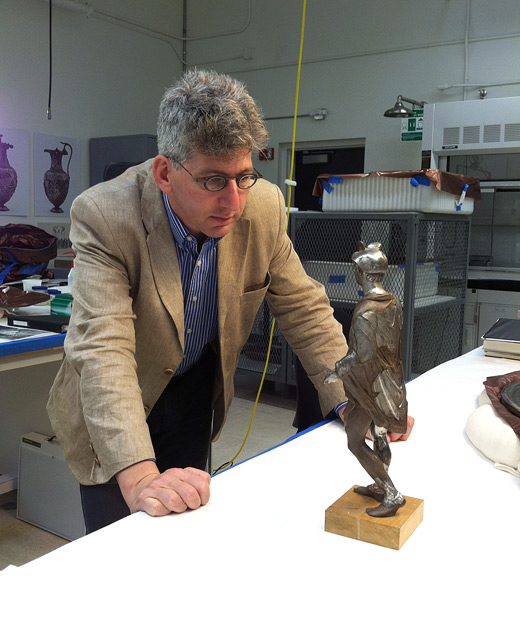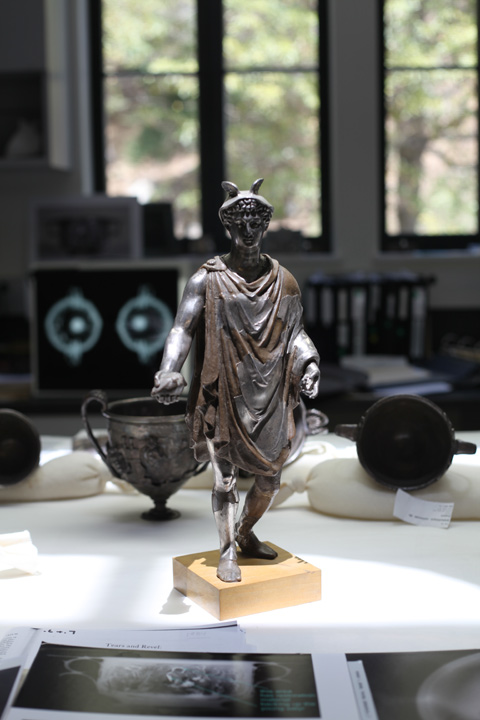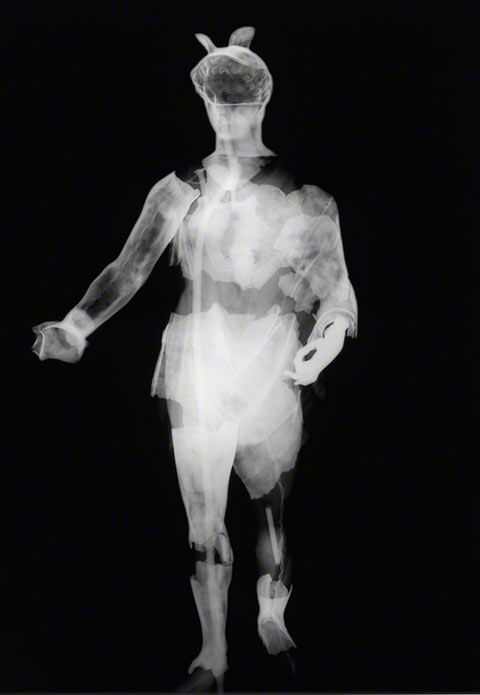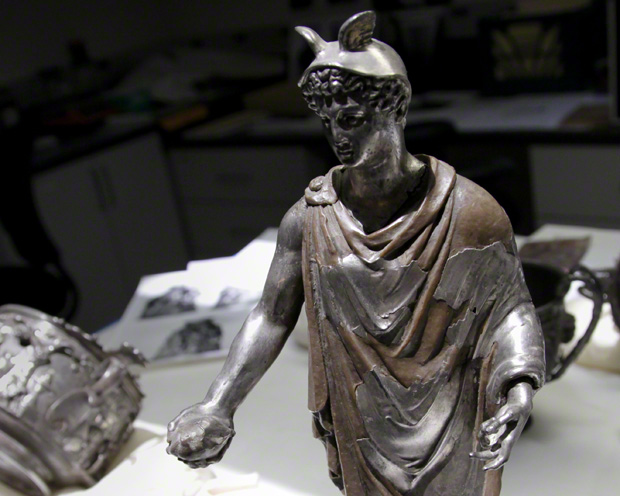The J. Paul Getty Museum and the Bibliothèque nationale de France are collaborating on the research and conservation treatment of the Berthouville Treasure, the extraordinary Roman silver hoard from the Bibliotheque’s Cabinet des Médailles.

Antiquities curator Kenneth Lapatin with in the antiquities conservation studio at the Getty Villa with the statuette of Mercury from the Berthouville Treasure (Roman, 100 B.C.-A.D. 200. Silver, 14 5/8 in. high. Bibliothèque nationale de France, Département des monnaies, médailles et antiques, Paris).
Almost one hundred objects arrived at the Getty Villa in December 2010, and technical examination, analysis, and photography of the individual artifacts continued throughout 2011.
One of the most intriguing objects is a small silver statuette, about 14 inches high, of Mercury, the Roman god of travel and commerce. The statuette was found in fragments, which were entrusted in the 19th century for restoration to Alexi Joseph Depaulis, a well known artist who worked in metal.


Knowing what has been done to the sculpture over the years, and what is inside it, is the first step in understanding how to properly conserve it. Close visual analysis along with X-radiographs have revealed much about this history.
X-rays revealed that Depaulis employed an armature of small metal rods with twisted wire. Wax was used to construct a stable support structure to hold the individual silver fragments. Analysis by our colleagues at the Getty Conservation Institute has established that the wax is natural beeswax.

Our study also suggests that the silver used to create the Mercury statuette was manufactured by hammering silver to a thin gauge sheet, but the left hand is solid and seems to have been made separately and to have been attached to the wrist of the right arm by sliding its wrist portion into the hollow arm. Traces of gilding on the wings of the god’s helmet are also preserved. The support rods appear to be solid and stable, so we have no plans to remove them.
Our work on this statue was one of what we hope to be many more interesting findings with this project.

<< Join Suzanne Lacy to Demand that #RapeEndsHereMasterpiece of the Week: Andy Warhol’s Polaroid, a Self-Portrait for the Facebook Age >>
You can follow any responses to this entry through the RSS 2.0 feed. You can leave a response, ortrackback from your own site.

I have been exploring for a little for any high quality articles or blog posts on this sort of space .
ReplyDeleteExploring in Yahoo I ultimately stumbled upon this web site.
Reading this info So i am glad to express that I
have an incredibly excellent uncanny feeling I found out just what I needed.
I such a lot without a doubt will make certain to don?t omit this web
site and give it a glance regularly.
I really like your writing style, wonderful info, appreciate it for
ReplyDeleteposting :D.